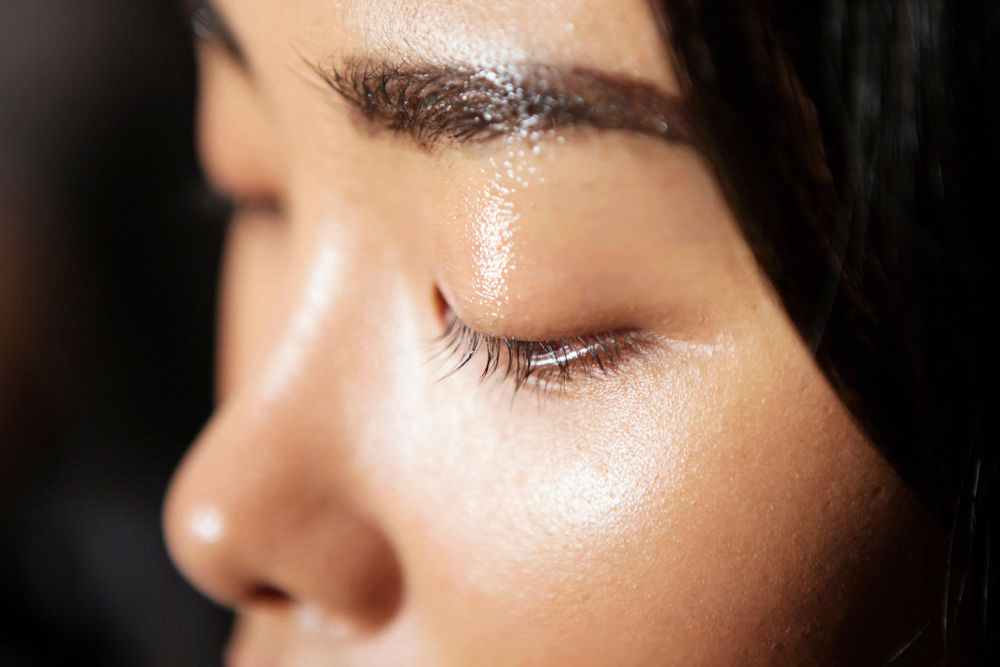At a glance, it feels like beauty can be broken down into two general categories: art and science. There are products that provide flourishes (MAC Fluidline), finishing touches (RMS Beauty Living Luminizer), possess dreamy names (Laura Mercier Caviar Stick), or come in intriguing colors (Nars' Schiap); these are the cosmetic art stars. Then there are those that plump, prime, preserve, etc. How do they do this? With science, of course. The word alone often implies enough justification for shelling out hard-earned cash money for a consumable cream.
But we live in the age of the internet, where information—good, bad, and otherwise—is at our fingertips, so there’s no real excuse for not doing a little homework, right? Enter EGF—the next frontier in anti-aging, an acronym worth reading up on.
Epidermal growth factor has come to the beauty market by way of modern medicine. A polypeptide (or molecular chain of amino acids) developed to speed wound recovery, EGF stimulates skin growth at the cellular level. It may also increase collagen production, though the jury's still out on this count. EGF’s success as a healing agent (success is a bit of an understatement actually; scientists have been awarded the Nobel Prize for this breakthrough) has led many in the beauty industry to parlay its powers in anti-aging products. Haven’t heard of it yet? Don’t worry, you will.
And soon. In the immortal Nordic fairy market, Bioeffect is one of the first on the scene with an EGF Serum. There’s also DHC’s sumptuously jarred EGF Cream and Mizon’s Bee Venom Calming Fresh Cream, which contains a bit of EGF that works in tandem with bee venom, propolis, and vitamin E. The DNAEGF Regeneration Serum by cosmetic surgeon Dr. Ronald Moy out in Beverly Hills also relies heavily on EGF.
But if there’s cognitive dissonance among you, readers, it’s warranted. That’s because wounds do not equal wrinkles; the profile of skin damaged by sun and time is not equivalent to skin damaged by injury, and therein lies the rub. Though EGF might sound like a miracle cream allowing us to regenerate fresher, newer, younger faces on a weekly or even daily basis (like some freakish John Travolta/Nicolas Cage thriller come to life), there’s still not enough research to prove its positive effects on more mature skin. In fact, early testing has connected its use to psoriasis and skin irritation brought on by the over-production of skin cells.
I spoke recently with Alicia Yoon of Peach & Lily about EGF’s current double-edged appeal. Though she admits to seeing “Benjamin-Buttoning” effects from her own testing of EGF products popular in Korea, she adds a word of caution in these early days of the ingredient. “There are controversial studies around whether it can be harmful in high doses for different reasons, but it is commonly agreed on that there is no conclusive set of data that shows that the ingredient is truly dangerous,” she said. “EGF, like parabens, is surrounded by some controversial talk but still has an avid, almost cult-like, following by those who have tried EGF-infused products. It all really depends on your risk tolerance for ingredients without substantial research on their potential hazards—and I would say that this doesn't apply to just beauty products, but the heaps of toxins we're exposed to and even eating on a daily basis.”
So until the verdict is in on EGF, test products with caution or consider pairing them with tried-and-true age-fighters. “My take is this—if you really want to go there, pick sunscreen over any product with EGF in it,” says Charlotte Cho of Soko Glam. “Protecting your skin from UVA/UVB is proven to protect your skin from premature aging with no side effects, and it’s a lot more affordable too!”
You win again, SPF.
—Lauren Maas
Photo by ITG. EGF! Now you know. Now it's time to get schooled on essence—because we did.

